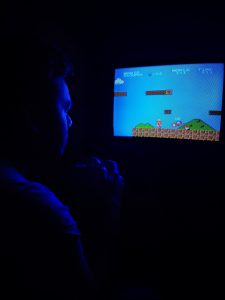Experts agree that when children get about 60 minutes of movement a day, they enjoy improved physical and mental health and academic performance. Unfortunately, the latest statistics show most kids in the United States get nowhere near that goal, missing out on the benefits of physical activity.
The Lack of Physical Activity Is Growing
According to the Centers for Disease Prevention and Control (CDC), experts estimate less than 24% of children between the ages of six and seventeen in the United States participate in 60 minutes of physical activity per day. This is a critical issue to address because routine physical activity is tied to so many good health outcomes.
The Benefits of Physical Activity
Getting active and moving more during the day helps children in a variety of ways.
Physical Benefits The (CDC) Centers for Disease Control reports that regular physical activity helps children maintain cardiorespiratory fitness, build strong bones and muscles and control weight. It also can reduce the risk of developing heart conditions, cancer, Type 2 diabetes, high blood pressure and obesity.
Mental Health Benefits
 The benefits of physical activity do not stop with physical health. According to the CDC, getting more active can also help children better control their anxiety and depression, as well as increase self-esteem. Studies also have shown that routine exercise proves especially beneficial for students with attention deficit hyperactivity disorder, including an association with reduced use of medications.
The benefits of physical activity do not stop with physical health. According to the CDC, getting more active can also help children better control their anxiety and depression, as well as increase self-esteem. Studies also have shown that routine exercise proves especially beneficial for students with attention deficit hyperactivity disorder, including an association with reduced use of medications.
Learning Benefits
Physical activity also leads to better students. When they routinely exercise, the CDC reports that students in the classroom
- Improve concentration and ability to stay on-task in the classroom
- Reduce disruptive behavior, such as fidgeting
- Improve their motivation and engagement in the learning process
- Improve their academic performance, getting higher grades and test scores.
What Parents Can Do
Parents can play a key role in helping their child become more physically active. Some suggestions:
- Emphasize fun. Help your child find a sport that he or she enjoys. The more they enjoy the activity, the more likely they will be to continue it. Get the entire family involved. It is a wonderful way to spend time together.
- Choose an activity that is developmentally appropriate. For example, a 7- or 8-year-old child is not ready for weightlifting or a 3-mile run, but soccer, bicycle riding, and swimming are all well great activities for kids this age.
- Plan ahead. Make sure your child has a convenient time and place to be active.
- Provide a safe environment. Make sure your child’s equipment and where they practice, or play is safe. Make sure your child’s clothing is comfortable and appropriate for the activity.
- Provide active toys. Young children especially need easy access to balls, jump ropes, and other active toys.
- Be a role model. Children who regularly see their parent’s enjoying sports and physical activity are more likely to do so themselves.
- Play with your children. Help them learn a new sport or another physical activity. Or just have fun together by going for a walk, hike, or bike ride.
- Set limits. Limit screen time, including time spent on TV, videos, computers, and video games, each day. Use the free time for more physical activities. · Make time for exercise. Some children are so overscheduled with homework, music lessons, and other planned activities that they do not have time for being active.
- Do not overdo activity. Exercise and physical activity should not hurt. If it becomes painful, your child should slow down or try a less vigorous activity. As with any activity, it is important not to overdo it. If exercise starts to interfere with school or other activities, talk with your child’s doctor.
 2
2

